Why Annapurna Circuit is Nepal’s Best All-Round Trek
The Annapurna Circuit is more than a trek; it is a life-changing experience. It is widely considered one of the world’s most famous treks. The combination of stunning natural beauty, incredible cultural diversity and physical challenge makes it one of the most unique adventures on Earth. With an impressive array of ecosystems and landscapes for many of us, the region takes you on the path of discovery, with every step of the trek, leading to the unique experience of the Annapurna Circuit: a trek of a lifetime. In this trek, you will walk from regal rainforests to bone-dry high dessert, and nothing about it will leave you without something epic to take in and blown away by the beauty of it all.
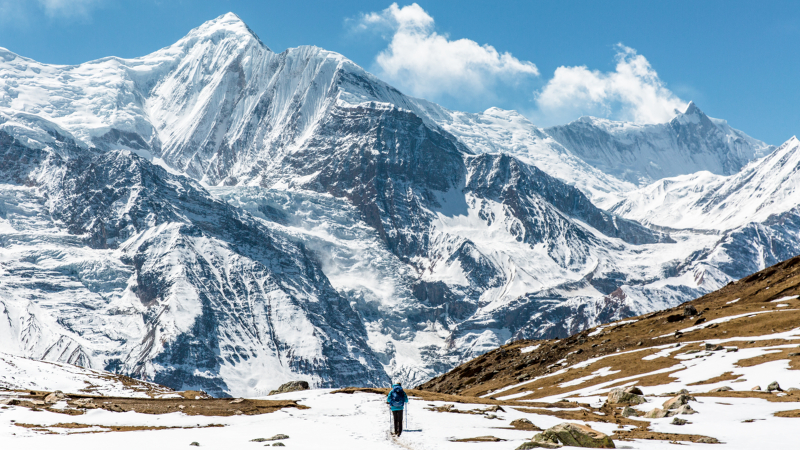
Because of the level of adventure, from a seasoned explorer to a first-time trekker, and accessibility, the Annapurna Circuit is one of the best blends of adventure for all levels of adventurers. The terrific vistas and rich and colourful culture and blend existing infrastructures for a good level of comfort, make it one potentially the best balanced and enjoyable trek for most adventure seekers to have. You have more than enough reason to see why this trek is the included invitation to provide the best overall trekking experience in Nepal.
1. Unmatched Geographical Diversity
Since trekkers move through so many ecosystems and climates, the Annapurna Circuit enables trekkers to be in the wilderness and experience an impressive variety of ecosystems and climates… you start trekking from either the low elevations of about 760 meters at Besisahar or Jagat, through terraced fields and dense forest to alpine meadows and snow-covered mountain passes, you continue north from the lush valley below, then trek through the dramatically different terrain of the dry, windy valleys of Upper Mustang that provide trekkers a whole new world. This is fun and beautiful and imagery that lasts a lifetime.
In an extremely short space of time, trekkers go from one altitude (approximately 760 meters) at the one end of the Annapurna track, to heights over 5,400 meters at Thorong La Pass; therefore, through the process of climbing to this height in a relatively short amount of time tourists have the option to go through an unparalleled number of ecosystems. If trekkers go up slowly, they appreciate the gradual changes to the flora and fauna then the changes in the weather conditions. This natural diversity also makes the Annapurna Circuit a great experience for photographers, a nature lover or simply a person wants to experience different components of the Himalayan ecology.
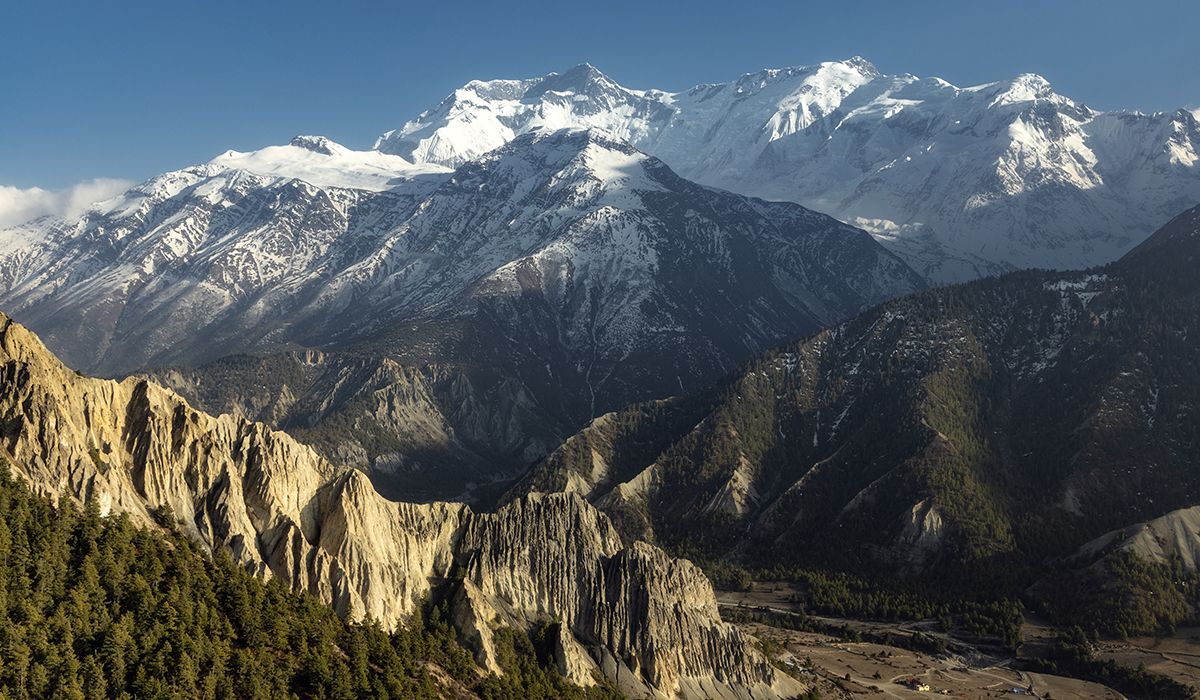
Major Highlights:
Marshyangdi River Valley: With its terraced rice fields and flowing waterfalls, the lush and vibrant valley provides an ideal warm-up for the trek.
Pisang: Set in fragrant pine forests, Pisang is a lovely alpine village that offers stunning mountain views and an authentic Himalaya experience.
Manang Valley: A semi-arid area, Manang provides wide-open views, variety of vegetation unusual to the region, and a great place for acclimatization.
Thorong La High Pass (5,416m): The highest point on the circuit, where you cross into the Mustang region to continue your trek while surrounded by stunning views in all directions.
Kali Gandaki Gorge: The deepest gorge in the world, and most dramatic, a canyon that cuts through and the mountains making for an exceptional natural environment along the trail.
2. Amazing Himalayan Views
The Annapurna Circuit has a number of great reasons to trekking it, one of the strongest is the consistently breathtaking views of the mountains. You’ll have line of site to some of the most incredible mountain views in the Himalayas, including Annapurna I, Dhaulagiri and Machhapuchhre (Fishtail) while on the trail. The mountains will provide a stunning backdrop that changes in color and depth with the day’s light, but especially at dawn and dusk.
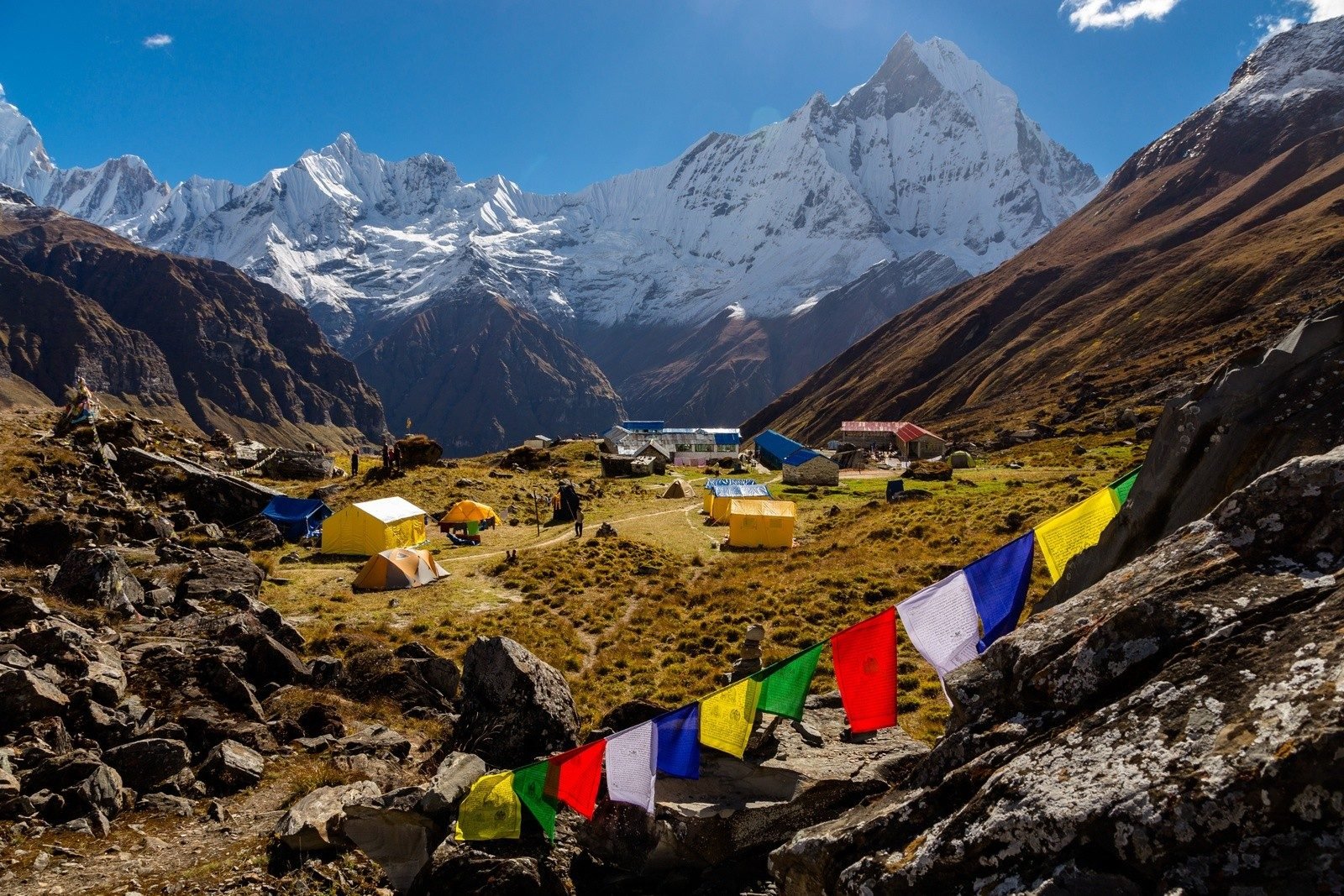
Major Highlights:
Annapurna II (7,937m): When we arrived at Chame and Upper Pisang, this mountain became the centrepiece, every time we stopped to look at its size and bright beautiful ice ridges would compel us to gaze back again and again.
Gangapurna + Glacier Dome: This is a bit of an icing smudge on the map. But out of Manang, its placement and the great framing of the glacier that fed the rivers makes it a beautiful view.
Tilicho Peak: Mentioned because of the side trip to Tilicho Lake, it is a stunning peak that complements the emergence of being on one of the highest lakes in the world.
Dhaulagiri (8,167m): Muktinath and Jomsom were perfect locations for Dhaulagiri. Being the seventh highest mountain in the world, you will nominate it for ruling the western landscape.
Machhapuchhre (Fishtail Mountain): When we think about Annapurna region mystique, this is the mountain that usually comes to mind. The sharply pointed profile of this mountain is iconic and probably the first featured in someone’s postcard photo.
3. Rich Cultural Experience
The Annapurna Circuit is not just another nature trek; it is a way to appreciate the full extent of the Nepalese culture. Trekkers not only see breathtaking views, but they also see many different ethnic peoples of Mongolian origin, like the Gurung, Magar, Thakali, and others with Tibetan influences in Mustang. Each cultural community is separate, with their own distinct languages, practices, and building styles; this type of variation provides richness, and is a true experience to complement the trekking landscape and even contribute to travelers’ cultural education.
Trekkers will experience a living culture not only through the breathtaking scenery, but through many things such as if they are lucky enough to engage with members of the community providing tours on “daily solar” community members effortlessly spinning prayer wheels; ancient monasteries that are there for hundreds of years with monks not changed through the decades; village celebrations that are welcoming in the New Year. You will have a chance to stay in teahouses run by local families, where you have a chance to engage with members of the community, hear their stories, experience their food and hospitality, and see the daily lives of the community. These cultural experiences give you an additional highly valued and rewarding layer to your physical trekking adventure.
Major Highlights:
Braga Monastery: It is an active Tibetan Buddhist monastery, 500 years old, Situated just outside of Manang a more quiet spiritual destination with murals and ritual,
Ghyaru and Ngawal: These are legit villages with Tibetan architectural style still in tact, so you can see living traditions of local Himalayan communities.
Muktinath Temple: It is a sacred pilgrimage site for Hindus and Buddhists famed with their natural springs and natural religious belief.
Marpha Village: If you visit Marpha known for its apple orchards, and traditional Thakaly culture connect yourself with nature and your heritage.
Kagbeni: It is called the gateway to Upper Mustang, and is called a medieval village with old fortifications with a nice lovely, timeless feeling.
4. Balanced Challenge and Accessibility
The Annapurna Circuit offers a moderate amount of challenge making it an ideal trek for almost everyone. The gradual ascent allows trekkers to naturally acclimatize, clearing the risks of altitude threats for as long as possible. Regardless of the excitement of the climb to Thorong La Pass, it may seem daunting, but can be achieved by anyone who is fit to trek and can put their own pace together. The trek can be be as challenging as it is without anything dangerous.
The abundance and size of teahouses on the trek allows you to have warm food, a bed and break without dragging the heavy weight of camping gear. When you add in to the fact that many of the camping gear can be rented or hired, the trek is solely because of solo trekkers and guided groups. This balanced contrast between challenge and camaraderie is one of the many aspect of the trek that makes it so popular.
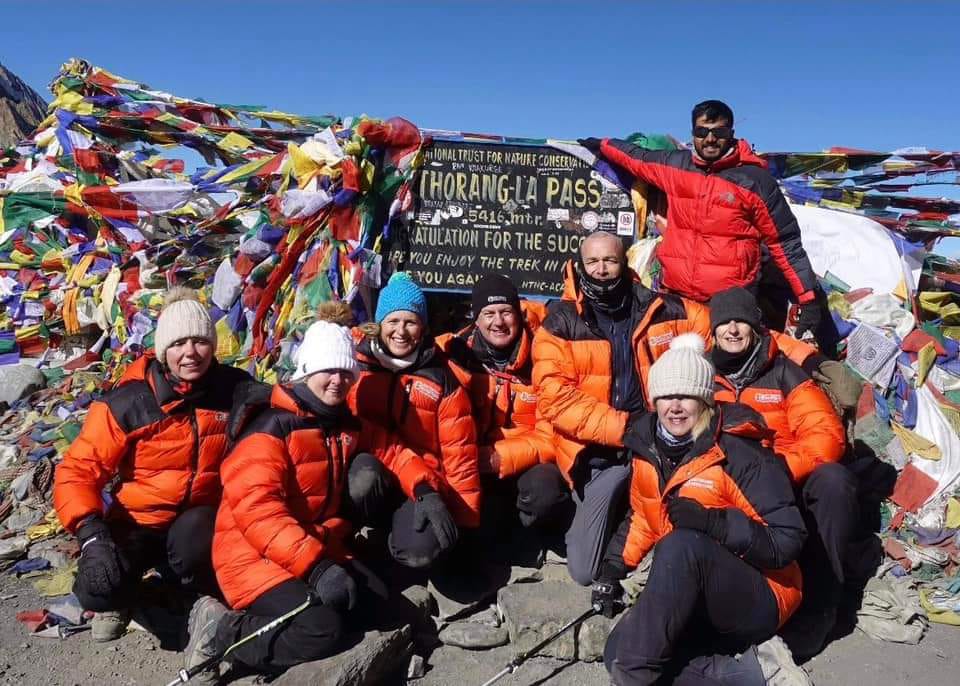
Major Highlights:
1. Thorong La Pass (5,416m): This is the highest and most epic part of the circuit, and trekkers can’t help but receive unbelievable views, with a truly unrestricted feeling of having accomplished a great achievement.
2. Yak Kharka & Thorong Phedi: You will need these breaks. These towns are good places to not only rest before the pass, but they were also rest towns for those acclimatizing and obtaining gear & supplies for the climb/summit.
3. Tilicho Lake Side Trip: Anonymous optional side trip to a very high elevation for trekkers to arrive at one of the highest alpine lakes in the world.
4. Pisang to Manang: You are gaining altitude (not too much really) but the views and scenery are beyond amazing and provide a much needed acclimatization break in between a very grueling trek and before the next stressful hike.
5. Descent from Muktinath: Back to Muktinath after crossing over the Thorong La pass then only one side trip from the town of Muktinath and again this is a steep descent but it feels sort of fun to do and you not only see some varied landscapes, you can see many historical and cultural places of importance to stop and explore.
5. Excellent Trekking Infrastructure
The infrastructure supporting the Annapurna Circuit is arguably the strongest aspect of this trek, and overall, it has been designed to support trekkers. Infrastructure is in place to support teahouses, guesthouses, and hotels, so there are places to tend to the needs of trekkers. As a result, trekkers now have more choice over their trip activities knowing that if a trek is remote or dirt cheap, there will always be somewhere for them to rent a room that is clean, eat a hot meal, and get a clean supply of drinking water.
The trail infrastructure is including many modern conveniences. For example, in villages like Manang and Jomsom (to name a few), trekkers can now find solar-powered showers, Wi-Fi access, bakery’s producing fresh bread, and places to hire mountaineering gear. Trekkers can keep in touch with a cell phone signal and regain peace of mind knowing immediate evacuation services are close by (far enough to avoid compromising the ‘ad-hoc ruggedness’ of the trek). This infrastructure limits distractions and allows you to spend your focus on what your trek is really all about: the adventure.
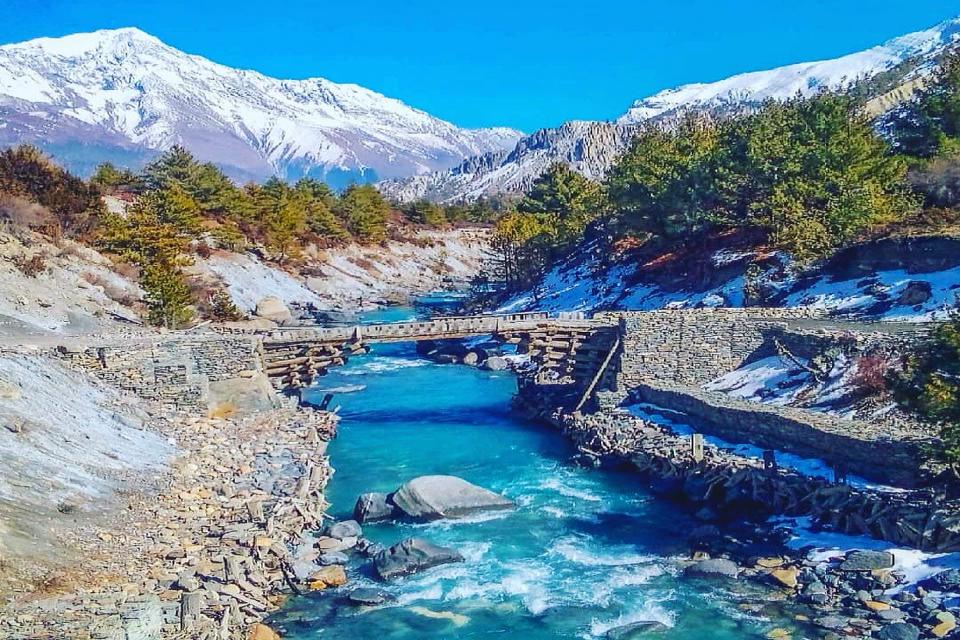
Major Highlights:
Manang: A bustling (for some) trekking destination with bakeries, clinics, guesthouses and gear shops it is a nice stop to refuel and recharge.
Jomsom: The only place in the entire region with an air port, the transport hub for the region.
Chame: Chame has many lodges, close to natural hot springs, so a great place to hit a restorative stop early in the trek.
Tatopani: Famous for the natural hot springs, a great place to heal your sore muscles after all the trekking.
Thorong Phedi Base Camp Lodge: The last high altitude destination before the high point of the trek, great place to take a rest and acclimatize!
6. Flexible Route and Side Trips
The Annapurna Circuit accommodates trekkers’ ability to vary the trek according to the number of days they can be on trek, their fitness level, and personal interests. Whether trekkers complete the circuit, include parts of it, or avoid all parts of the circuit treks, there are a multitude of points where trekkers can beg travel or end travel on a trekking route. Alternative routes, and in some cases jeep road, can even bypass or allow trekkers to travel on an alternative route, which increases trek variety and flexibility.
For instance, there are many side trips possible, which can eat into a trekker’s time, but may enhance their main trekking experience. A diversion to Tilicho Lake, one of the highest freshwater lakes in the world, will offer good weather trekkers some serene but dramatic alpine scenery. Ice Lake near Manang and the sunrise viewpoint at Poon Hill are popular side trips that serve to enhance the main route. The option to add these side trips into the main trek similarly adds to the appeal of the circuit for trekkers of all types from novice to advanced.
While nothing may compare to the elite hiking on the Annapurna Circuit, here are reasons that are unique to it:
Major Highlights:
1. Tilicho Lake – this most stunning high-altitude lake, at 4,919 meters is definitely an exciting place for any trekker with some adventurous spirit.
2. Ice Lake – an alpine lake accessed from Manang, it could not be more beautiful or peaceful.
3. Poon Hill (3,210m) – the most photographed viewing area for sunrise panoramas of Annapurna & Dhaulagiri.
4. The Upper Pisang Route – This route is not only much less travelled, but it also has far superior scenery than the main lower trail, plus solitude.
5. Jharkot – a beautiful place that has an intact relevant culture, that is walking distance from Muktinath, a traditional town.
7. The safest, and natural acclimatization
In terms of safe, and natural acclimatization, the gradual increase in altitude on the Annapurna Circuit is very well thought out. There are planned rest days, and hikers who will have the chance to acclimatize to thinner air, in important villages like Manang and Yak Kharka will have very restful opportunities. In addition, for hikers on rest days, optional, side hikes that could be completed on their acclimatizing day, for hikers to acclimatize but also to have some memorable experiences.
Due to the gradual ascent, high level of local and health services support, the circuit is within the reasonable range for a first-time high-altitude trekker to undertake. The route structure and design provide more safety, making it easier for trekkers to enjoy the stunning experience while also learning apart from the day to day trek itself.
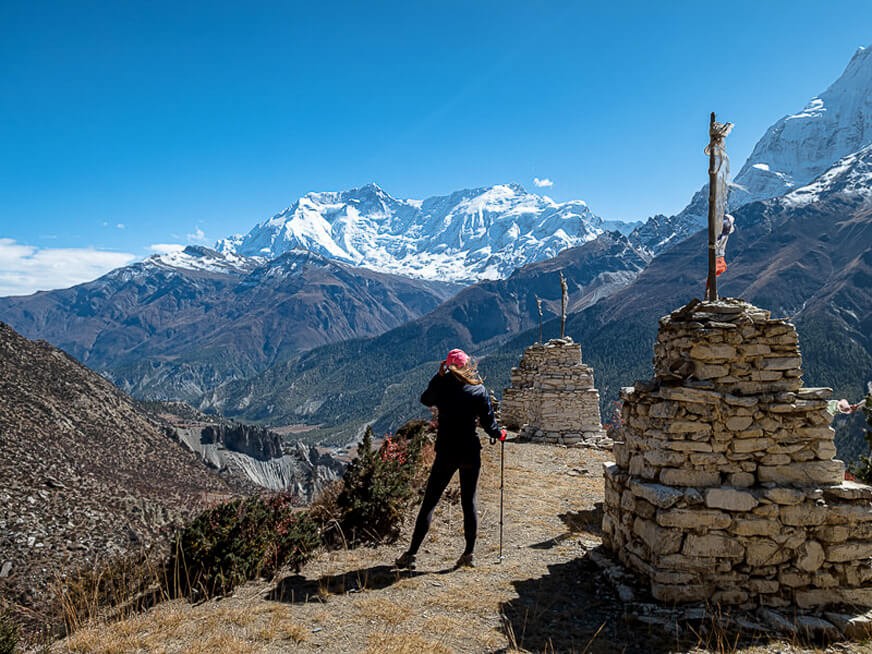
Major Highlights:
Acclimatization day hikes in Manang: It is recommended to experience day hikes to either Ice Lake or Gangapurna Lake. You can acclimatize and enjoy views of some really stunning lakes, and be out in a unique environment.
Yak Kharka: A quiet little village, it offers a nice, much-needed peaceful and quiet rest stop before continuing up to a higher altitude thorong phedi.
Thorong Phedi: An important last overnight acclimatization stop before crossing the pass.
Braga village: A slight climb with a cultural experience at the historic monastery.
Tilicho base camp: It can be sparked as the last high-altitude stop before the trek to Tilicho lake.
8. Year-Round Trekking Potential
Expect best trekking seasons in spring and autumn, but with some careful planning the trail can be trekked any time of the year. The rain shadow effect protects northern regions, such as Mustang, from the monsoon, allowing trekkers into the region while much of Nepal experiences rain. Winter allows trekkers solitude, beautiful clear skies for multiple days, and a view of the mountains from a different perspective.
Trekkers, with the right knowledge and equipment can experience the magic of the Annapurna Circuit in a multitude of ways. Trekkers should expect coldness and snow-weather preparedness in winter’s approach, but be rewarded with postcard-perfect views with hardly another person in sight. The ability to visit the Circuit is diverse enough in terms of weather conditions, which adds up to endless variety for trekkers from all walks of life, and we hope this benefits a wide array of tourists and travellers, to trek, work, and explore respectively, and at different times of the year.
Major Highlights:
Muktinath and Mustang Region: These dry high-altitude places can even be accessed during the monsoons.
Lower Annapurna Villages: The good weather of winter makes these an ideal trekking option.
Jomsom Flights: These operate as a regular service, unless the weather conditions, prohibit them. Hence, provide an effective entry to the region.
Tatopani: A warm relaxing place to experience hot natural springs during the colder months.
Marpha: A pleasant environment in both low and high seasons, particularly bustling during the apple harvest.
9. Affordable, but Rewarding
Compared to many primary international treks around the world, the Annapurna Circuit is a surprisingly affordable option. Your daily expenditure which includes, accommodation, food, and permits plus basic equipment, almost invariably falls between $25 to $50 USD. Even including guides or porters, it remains an affordable trail accessible to a wide range of adventure seekers from students and backpackers.
For the little expense you incur, the reward is tremendous. Trekkers access some of the most extraordinary views, colourful culture and reasonable physical challenge. The affordability and valuable rewards of the trek are principal reasons for the continuous success of the trek.
Major Highlights:
TIMS and ACAP Permits: Inexpensive permits that allow access to protected areas and support conservation.
Homestays: Inexpensive lodging and cultural exposure, while receiving local hospitality.
Discounts: Discounts for permits and some lodges, for organized treks.
Low cost food: A traditional dal bhat meal provides lots of nutrition for minimal cost, available throughout the trail.
Teahouses: Affordable teahouses in simple rooms to lodges at various price points.
Conclusion: The Ultimate Himalayan Experience
The Annapurna Circuit is unrivaled when it comes to trekking in Nepal. It is the best overall trekking experience because of its stunning topography, unique culture, specific challenge, and ample infrastructure. It challenges every aspect of your heart, body, and soul like few other adventures to be taken.
Whether you are seeking solitude, adventure, or cultural interaction the Annapurna Circuit will provide an unforgettable trek each step of the journey. The trek passes through the snowy heights of Thorong La, and the warm welcomes of mountain villages, which truly epitomizes the spirit of trekking in the Himalayas. It is easy to see why the Annapurna Circuit is still is the best all round trekking experience in Nepal. Contact us today at Happy Mountain Nepal, Facebook, Instagram, or TikTok
